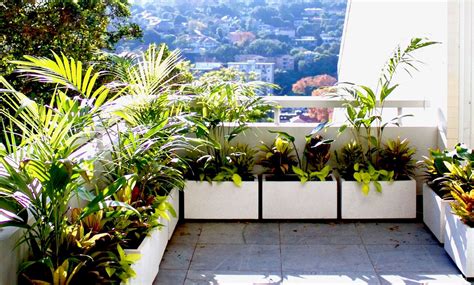Optimizing Sunlight for Thriving Balcony Gardens: Key Tips for Success
Gardening in urban environments, particularly on balconies, comes with unique challenges, including limited space and variable sunlight exposure. However, with the right strategies, maximizing sunlight for your balcony plants can yield lush, healthy growth. Whether you’re a seasoned urban gardener or new to the world of container gardening, this guide will walk you through how to optimize sunlight and create the perfect conditions for your plants.
Key Concepts in Balcony Sunlight Optimization
Sunlight is the most critical factor for plant health. It affects photosynthesis, growth, and flowering. But not all balconies receive the same amount of sunlight. Optimizing light exposure for your plants depends on various factors:
- Sunlight direction: South-facing balconies receive the most sunlight, while north-facing ones get the least. East-facing balconies benefit from morning light, and west-facing balconies get afternoon sun.
- Plant types: Different plants have different light needs. While some thrive in full sun, others prefer partial shade.
- Sunlight hours: It’s essential to track how many hours of direct sunlight your balcony gets during each season.
Historical Context: Urban and Balcony Gardening Evolution
Urban gardening has surged in popularity as cities expand, with balconies providing a small but valuable patch of outdoor space for growing plants. The roots of container gardening trace back to ancient civilizations, such as Babylon’s famous Hanging Gardens. However, the modern balcony garden movement emerged as cities became denser, driving a need for efficient use of smaller spaces.
Current State Analysis: Challenges and Opportunities for Balcony Gardens
One of the main obstacles in urban gardening is limited sunlight due to surrounding buildings. Shadows cast by other structures can severely restrict light exposure. However, technological advancements such as reflective materials and light meters, along with strategic plant placement, have offered new ways to combat these challenges.
| Balcony Orientation | Sunlight Hours | Suggested Plants |
|---|---|---|
| South-facing | 6-8 hours of direct sunlight | Tomatoes, peppers, lavender, succulents |
| East-facing | 4-6 hours of morning sun | Herbs, lettuce, spinach |
| West-facing | 4-6 hours of afternoon sun | Roses, geraniums, sunflowers |
| North-facing | 1-3 hours of indirect sunlight | Ferns, hostas, ivy |
Practical Applications: Maximizing Sunlight on Your Balcony
Maximizing sunlight exposure on your balcony starts with understanding the available light and making the most of it. Here are some practical techniques:
- Reflective Surfaces: Use light-colored walls or mirrors to bounce light toward plants in shadowed areas.
- Plant Shelves: Install vertical plant shelves to stack containers and expose plants to different light levels.
- Rotating Plants: Regularly rotate containers to ensure even sunlight distribution across all plant parts.
- Artificial Lighting: If natural light is insufficient, consider using grow lights to supplement light exposure.
Case Studies: Successful Urban Gardens
In urban centers like New York City and Paris, urban gardening enthusiasts have transformed small balconies into green oases. In one notable case, a Parisian gardener combined south-facing light with mirrors to create optimal light conditions for plants that would otherwise struggle with limited direct sunlight.
Stakeholder Analysis: Who Benefits from Balcony Gardens?
Balcony gardens not only benefit the gardeners but also contribute to urban biodiversity, improve air quality, and enhance mental well-being. Key stakeholders include:
- Homeowners: Enjoy fresh produce and flowers at home.
- City Planners: Urban green spaces help mitigate the urban heat island effect.
- Environmentalists: Balcony gardens increase greenery in urban areas, promoting sustainability.
Implementation Guidelines: How to Start Optimizing Sunlight
Implementing an effective sunlight optimization strategy for your balcony garden requires planning. Here’s how to get started:
- Assess Your Balcony’s Sunlight: Track sunlight hours at different times of the day and across seasons.
- Choose the Right Plants: Select plants that suit your balcony’s light conditions.
- Install Reflectors: Use reflective materials to maximize available light.
- Arrange Plants Strategically: Place sun-loving plants in the brightest spots, and shade-tolerant plants in darker areas.
Ethical Considerations in Urban Gardening
Ethics play a significant role in urban gardening, from the choice of plants to environmental impact. It’s essential to avoid invasive species that could disrupt local ecosystems and use water-efficient gardening techniques to minimize resource use in densely populated areas.
Limitations and Future Research
While optimizing sunlight can greatly improve plant health, there are limitations, such as unpredictable weather conditions and limited space. Future research could explore more advanced lighting technologies or architectural modifications designed specifically to improve sunlight exposure for urban balconies.
Expert Commentary on Balcony Gardening Success
Experts agree that while balcony gardening presents challenges, particularly with sunlight optimization, the potential rewards make it worthwhile. Urban gardeners who follow the proper strategies can create thriving balcony gardens even in the most densely populated cities. The key is to continuously adapt and innovate, ensuring that plants get the best possible conditions for growth.


